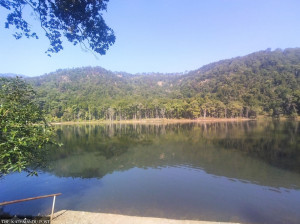Sudurpaschim Province
Shuklaphanta lures bird watchers
A recent report of the fresh bird species count, which was made public in December last year, has revealed 26 additional bird species in Shuklaphanta. With this, a total of 450 bird species are found in the protected area.
Bhawani Bhatta
“I had heard about swamp deer and tigers in Shuklaphanta. But the area is good for birdwatching, as several species of birds are found here. The area is good to enjoy wildlife and even better for bird watching,” said Lad, who loves taking pictures of birds. The Indian national shared his plans of visiting Bardiya and Chitwan for birding as well.
A Dutch couple, who identified themselves as enthusiast bird-watchers, had also visited the country’s second youngest national park a few months ago. They stayed in Shuklaphanta for three days and visited Rani lake, grassland of Shuklaphanta and Mahakali river banks to watch birds.
“We were able to watch various species of birds,” said Reni Decker of the Netherlands.
Of late, Shuklaphanta has come to be known as a major bird-watching destination in the country. Many tourists, both international and domestic, visit the protected area to enjoy wildlife and birds. The increasing number of birds and bird species in the park lure droves of tourists.
A recent report of the fresh bird species count, which was made public in December last year, has revealed 26 additional bird species in Shuklaphanta. With this, a total of 450 bird species are found in the protected area.
The bird count held in the early months of 2019 spotted 26 new bird species, including glossy ibis, great grey babbler, white-tailed lapwing, maroon oriole, great bitten, white-capped water redstart and black-tailed godwit, among others. The bird count conducted in 2012 enlisted 424 bird species in Shuklaphanta.
“Shuklaphanta is a great place for bird watching. The park has enough habitats for birds owing to its biological diversity,” said Laxman Prasad Paudel, chief conservation officer at the park. According to him, the ponds, rivers and agricultural lands in the park’s surrounding areas make the area suitable for birds’ habitat.
“The ponds and rivers in the area are filled with migratory Siberian birds in the winter,” Paudel said. “Visitors could watch birds here around the year.”
With an objective to promote Shuklaphanta as a major destination for bird-watching, the park administration has been launching several programmes in the area. The park organises bird-watching programmes every Friday, in which locals and park employees enjoy bird watching.




 7.12°C Kathmandu
7.12°C Kathmandu











%20(1).jpg&w=300&height=200)

